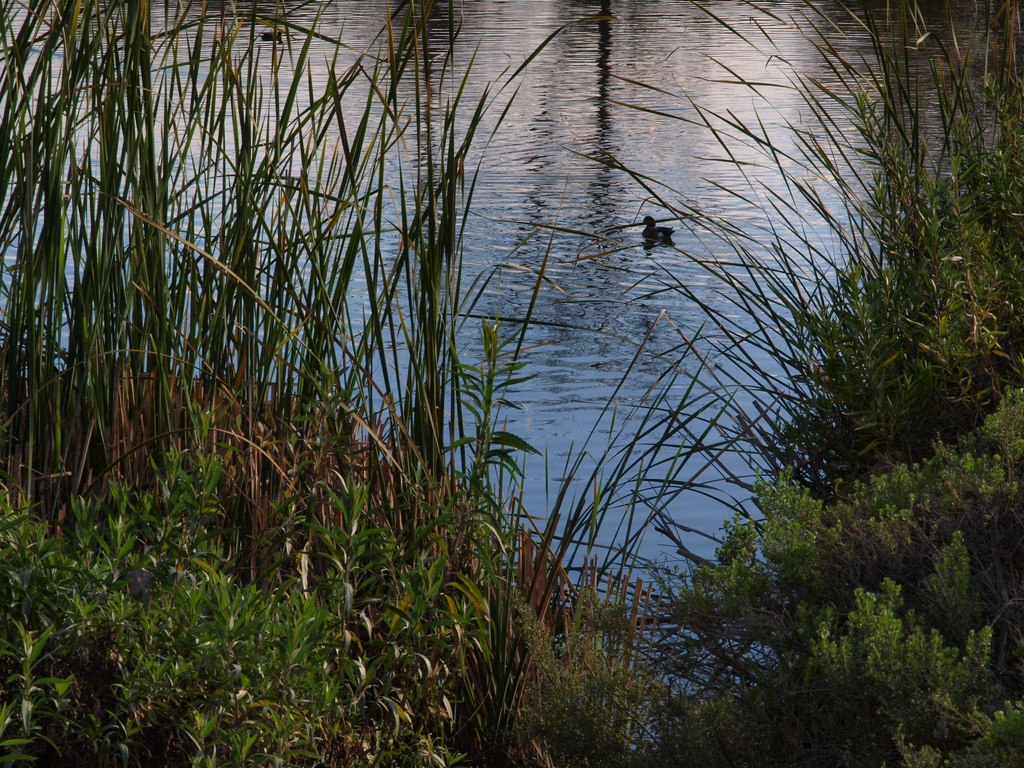Los Angelenos may be fond of their cars, but they’re also fond of their diverse wildlife. That’s probably not what the U.S. Army Corps of Engineers was counting on when it unilaterally and without warning decided to clear-cut 43 acres of wildlife habitat on L.A.’s Sepulveda Basin.
Much of the area’s vegetation had been planted in the 1980s, part of an Army Corps project that turned that portion of the Los Angeles River flood plain into a designated wildlife preserve.
Tramping through the mud Friday, botanist Ellen Zunino — who was among hundreds of volunteers who planted willows, coyote brush, mule fat and elderberry trees in the area — was engulfed by anger, sadness and disbelief.
“I’m heartbroken. I was so proud of our work,” the 66-year-old said, taking a deep breath. “I don’t see any of the usual signs of preparation for a job like this, such as marked trees or colored flags,” Zunino added. “It seems haphazard and mean-spirited, almost as though someone was taking revenge on the habitat.”
In 2010, the preserve had been reclassified as a “vegetation management area” — with a new five-year mission of replacing trees and shrubs with native grasses to improve access for Army Corps staffers, increase public safety and discourage crime in an area plagued by sex-for-drugs encampments.
The Army Corps declared that an environmental impact report on the effort was not necessary because it would not significantly disturb wildlife and habitat.
By Friday, however, nearly all of the vegetation — native and non-native — had been removed. Decomposed granite trails, signs, stone structures and other improvements bought and installed with public money had been plowed under.
Since the razing, the Corps has posted many photos of happy birds in other parts of the basin habitat in an attempt to reassure the public, or at least the public that is aware of its Flickr page. The Corps said that “somehow” it “didn’t clearly communicate” its intentions to plow under the habitat. Is it any wonder that excuse didn’t go over so well with, well, anyone?
The state water agency, state senators, and city council members are demanding an explanation by Feb. 11, and a plan to remediate the newly crushed area. So far the Corps’ explanation has been, essentially, “Oops.” Char Miller at KCET is not having any of it:
Did the Corps believe that no one would care? Or that even if people came upon its hack job that the traumatized terrain would elicit no comment? Or did the agency simply decide to act as it so often has in the past with little regard to the environmental consequences, and the public be damned?…
It is impossible to imagine that the Corps’ construction of this sterile monoculture, so consistent with its concrete fixation, will ever come close to matching the rich biota that citizen-led restoration efforts have nurtured on and attracted to the site. Like a wolf peeing on its territorial boundaries, the U.S. Army Corps of Engineers, with bulldozer and chainsaw, has marked its turf, and the result has been a scandalous diminishing of nature and democracy.
Like a wolf peeing on its territorial boundaries. The Corps might’ve razed the land, but Miller’s raised standards when it comes to awesomely and appropriately rude similes to apply to the federal government.



